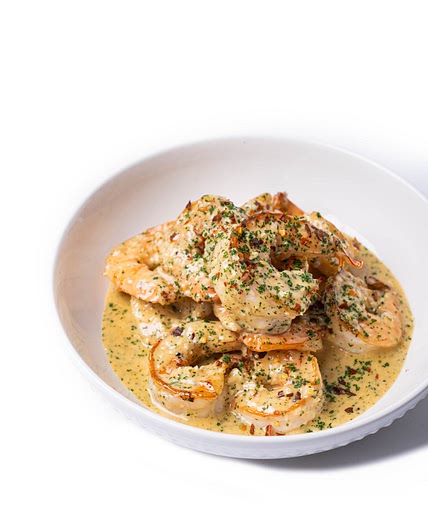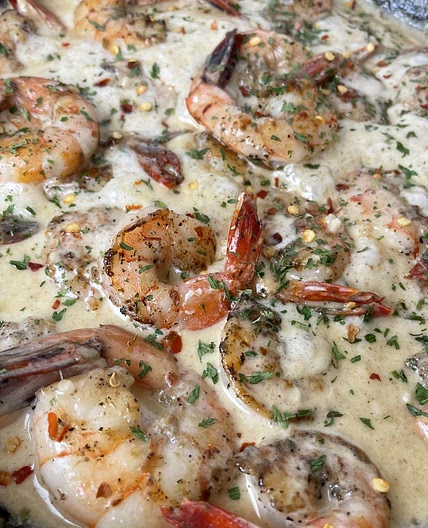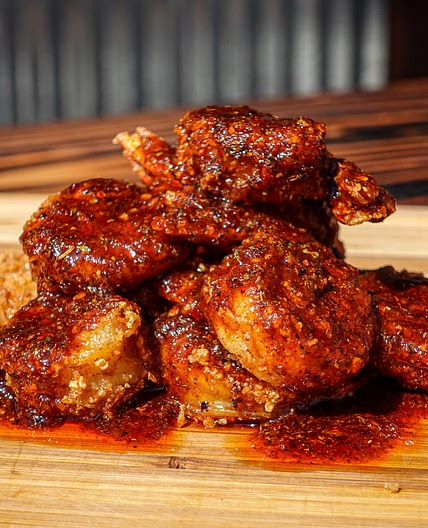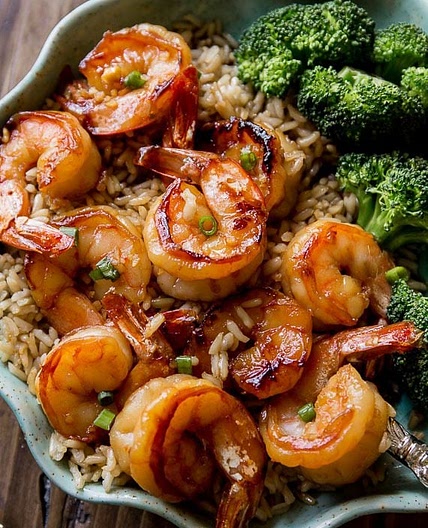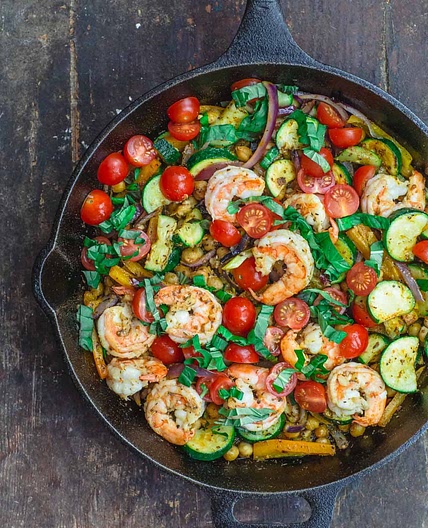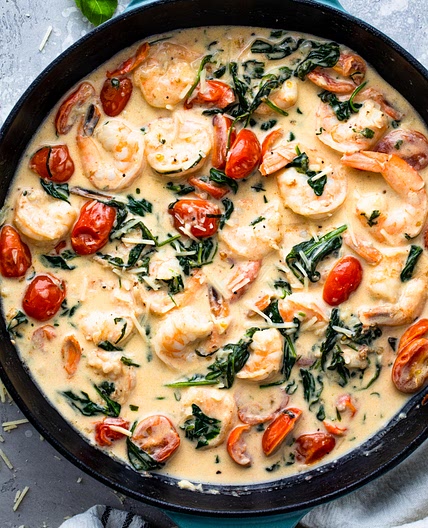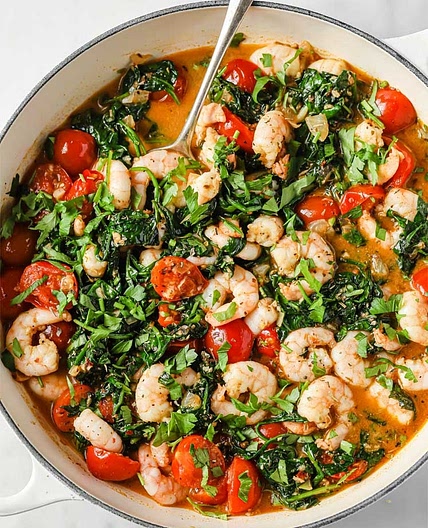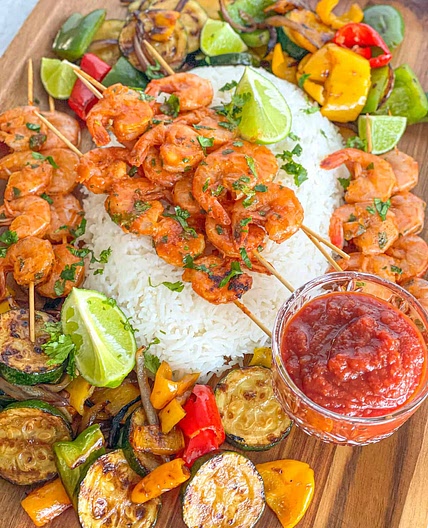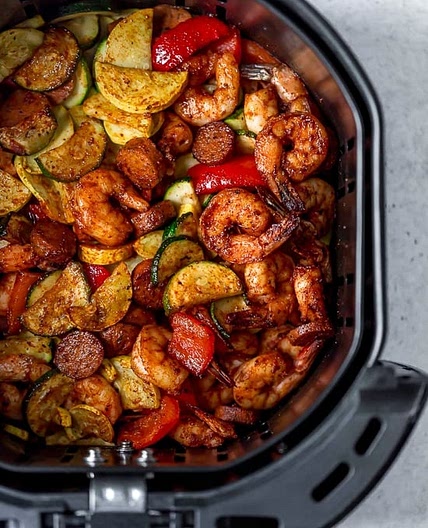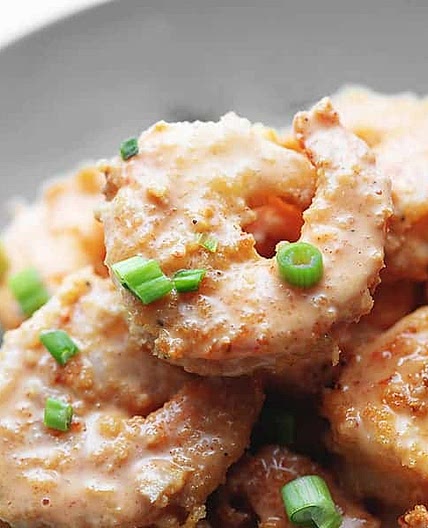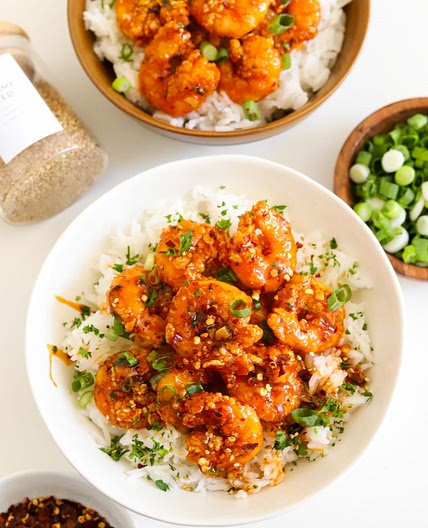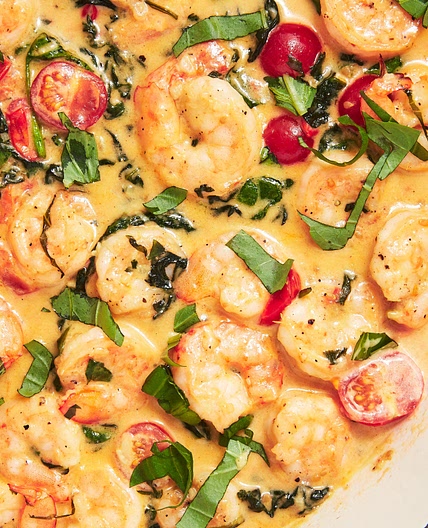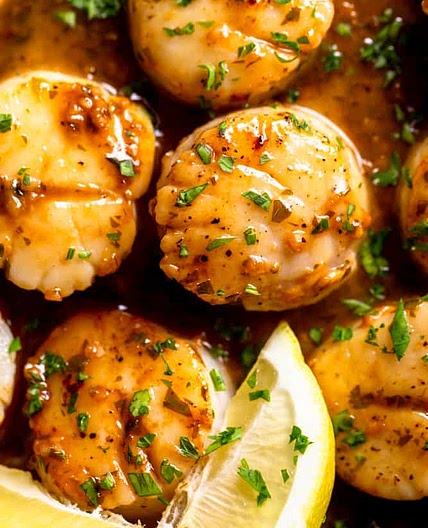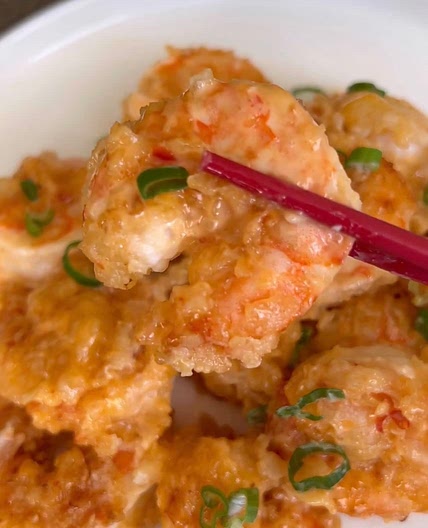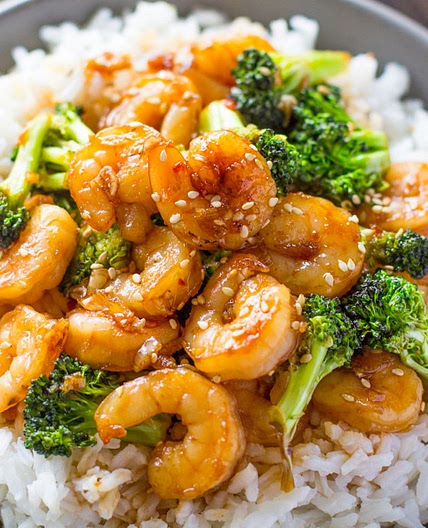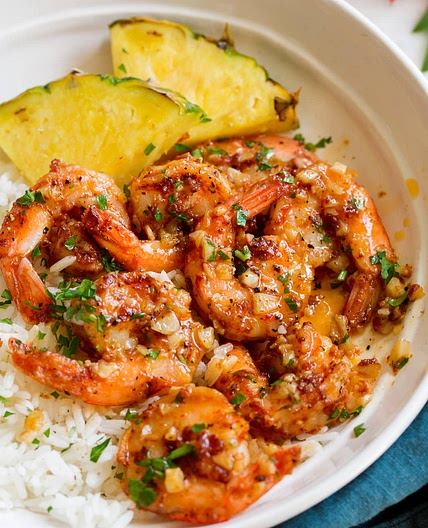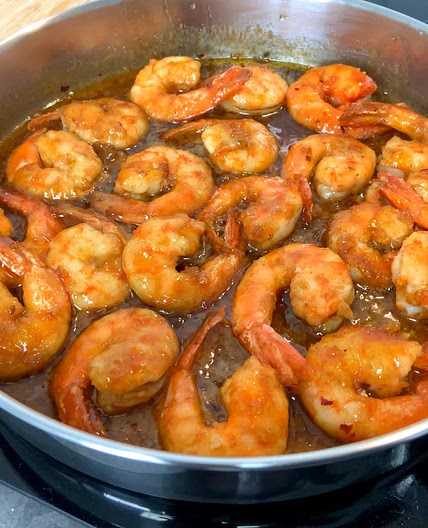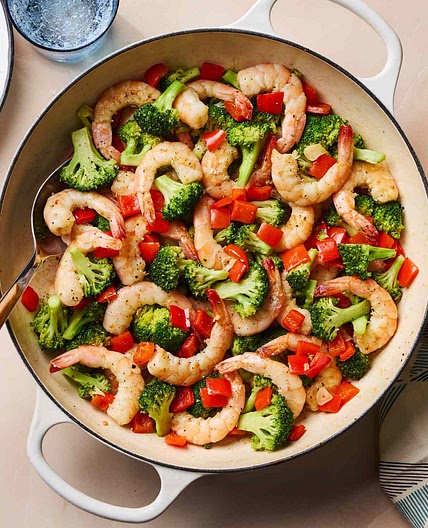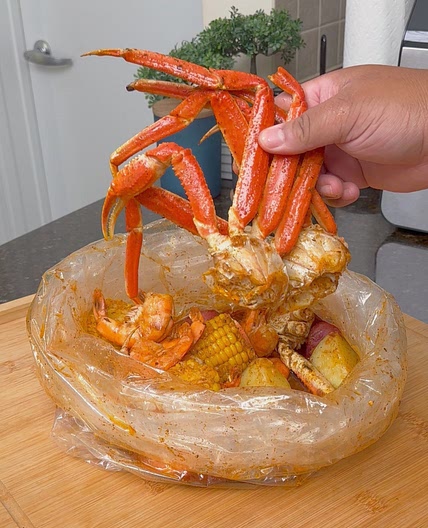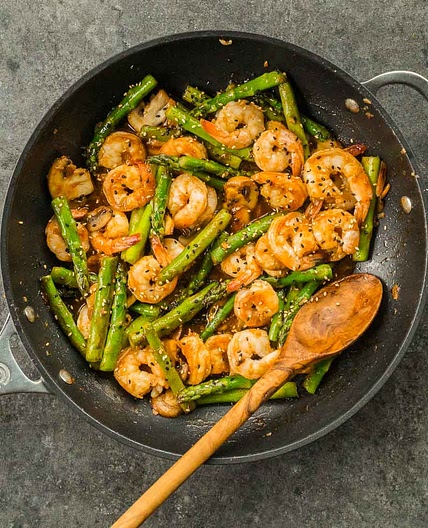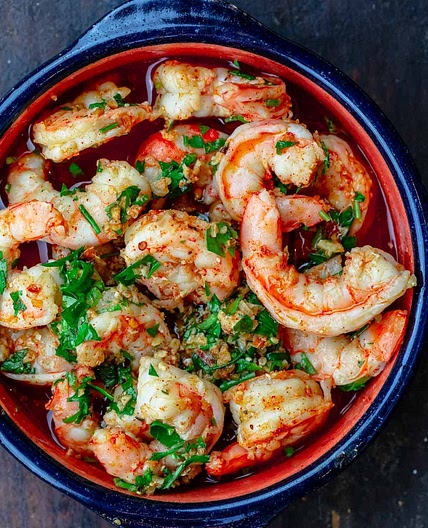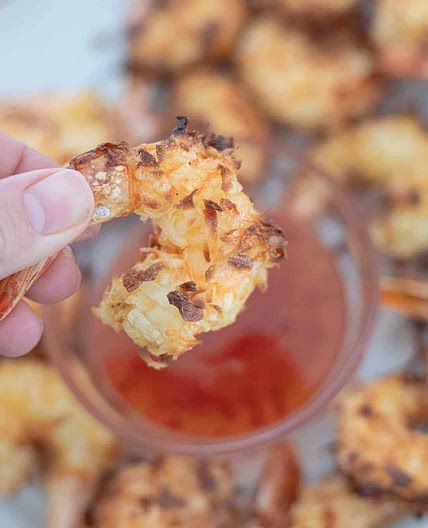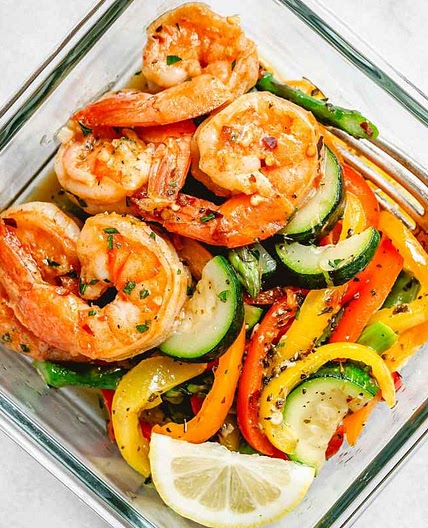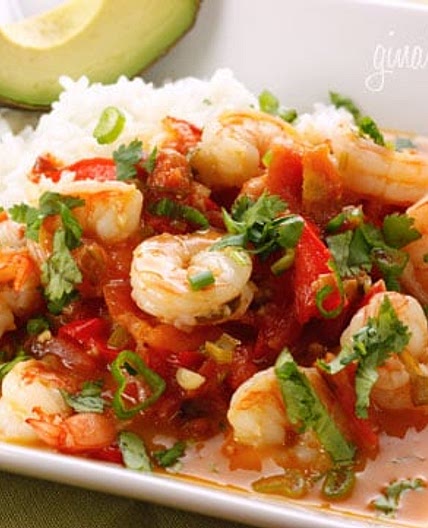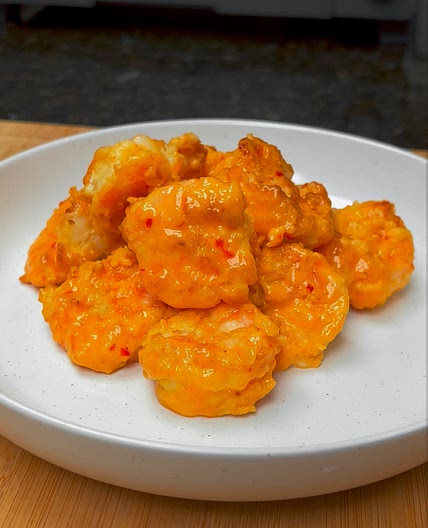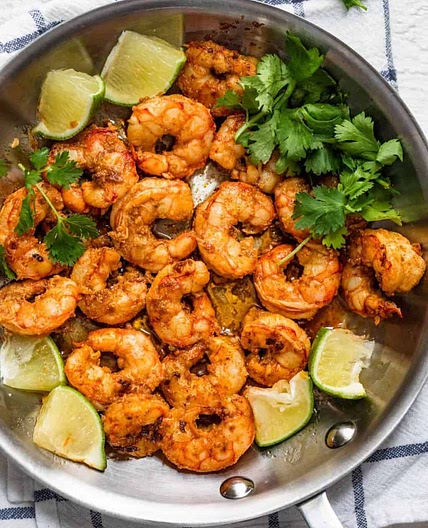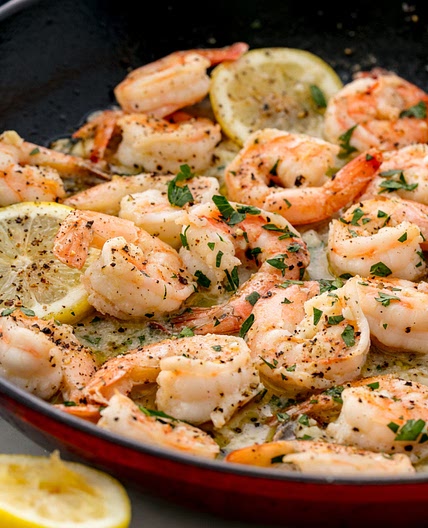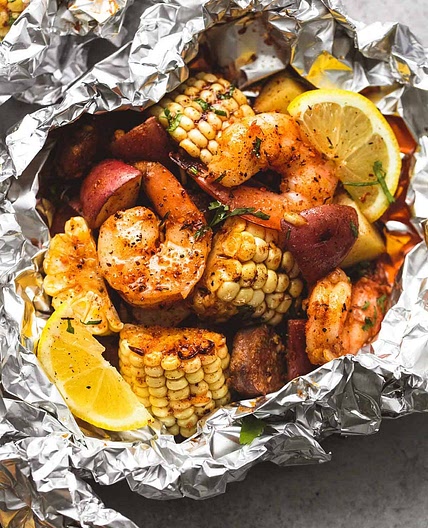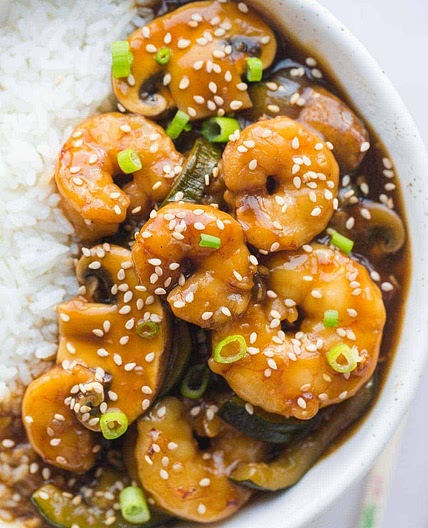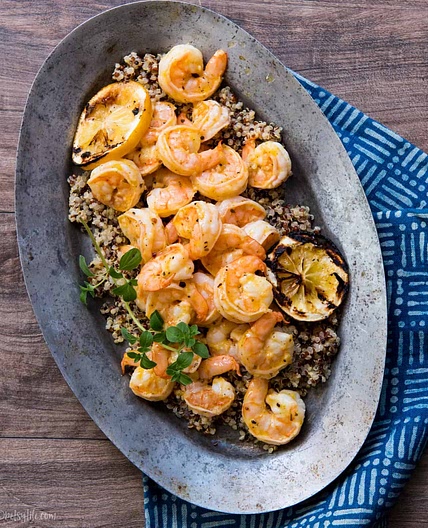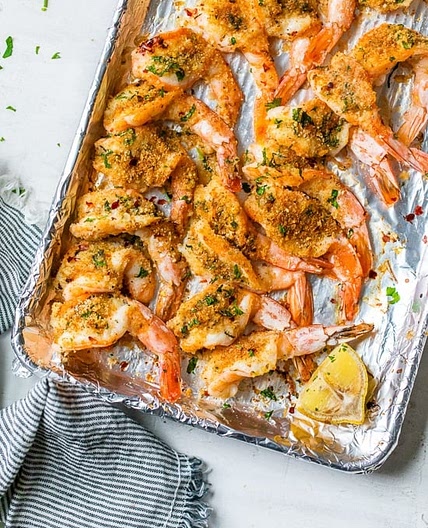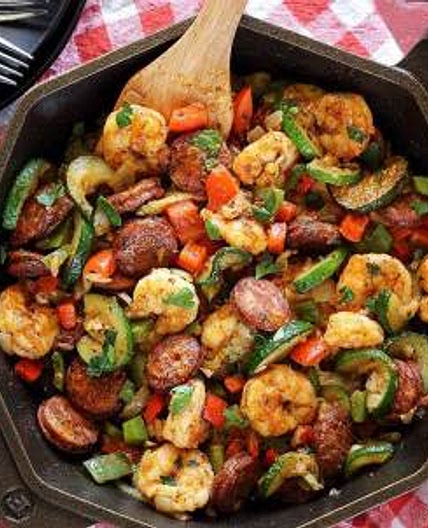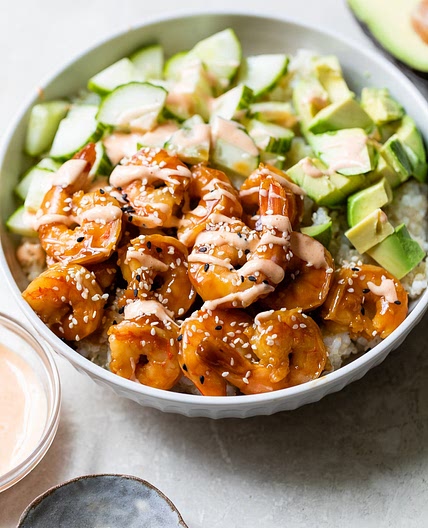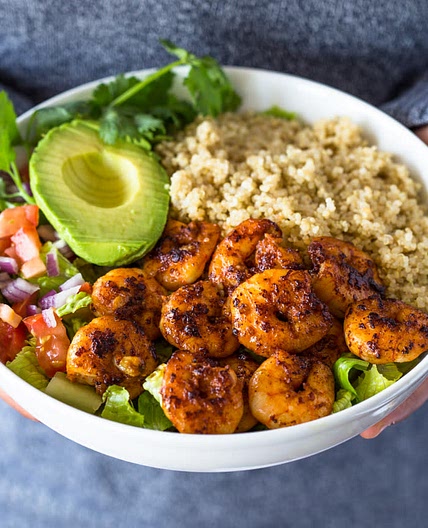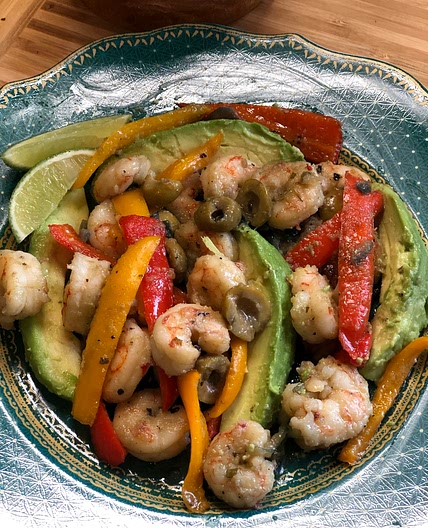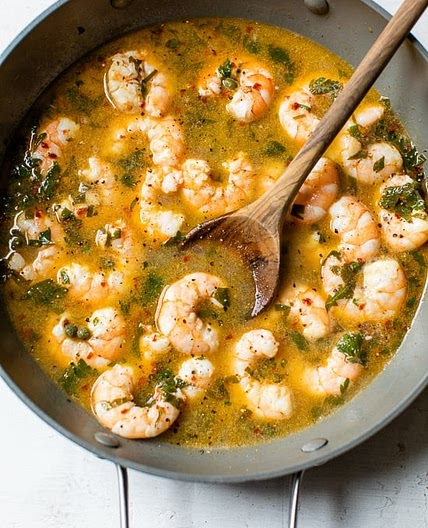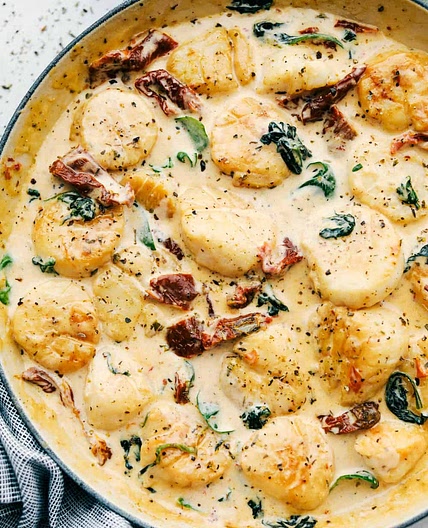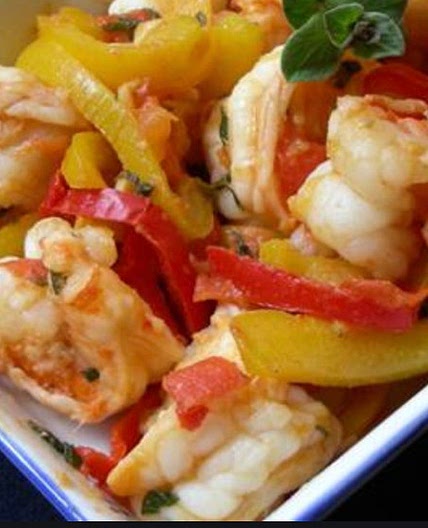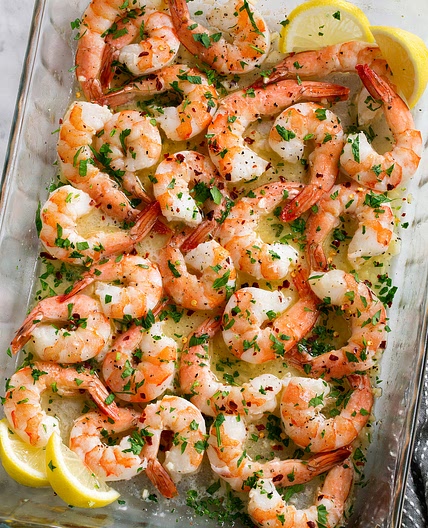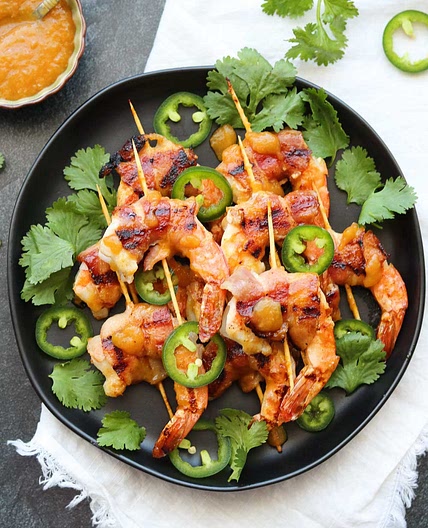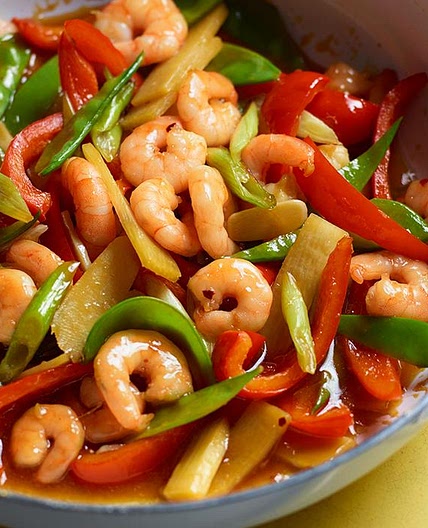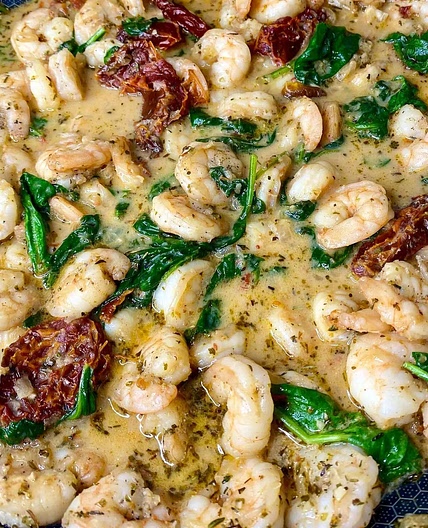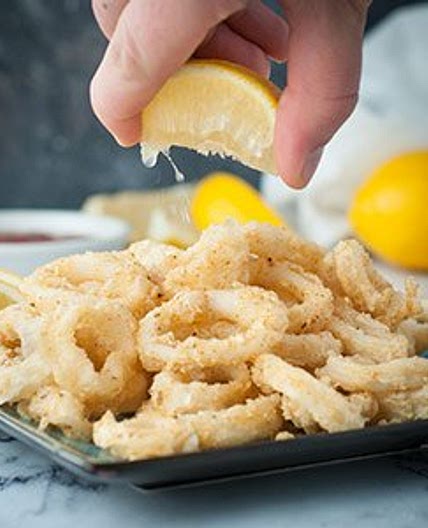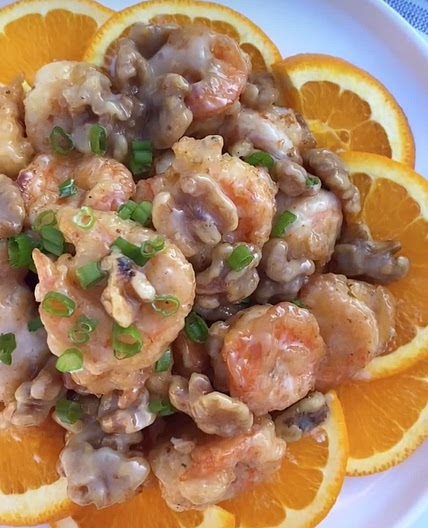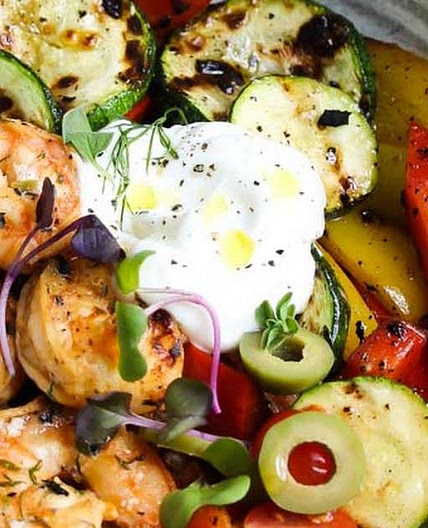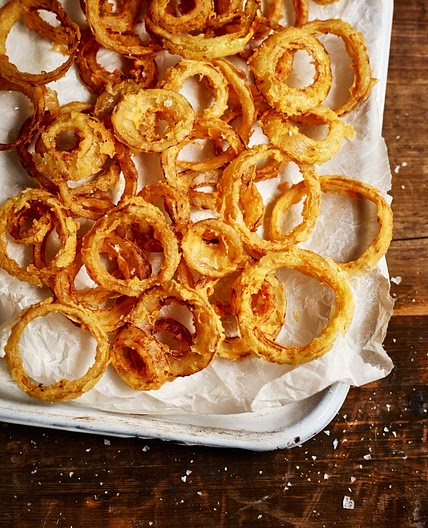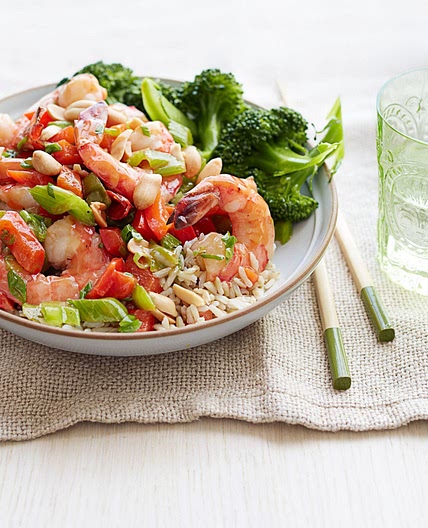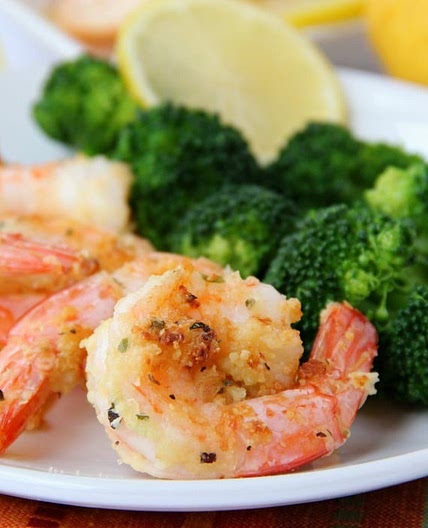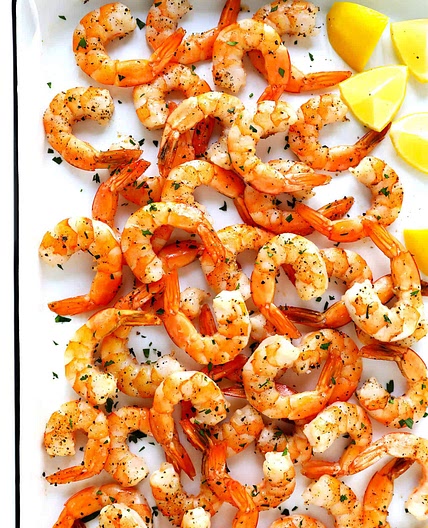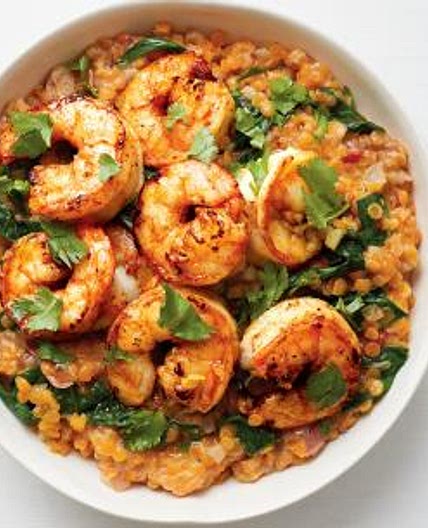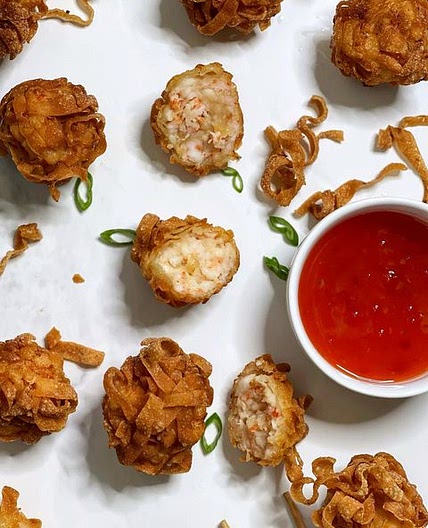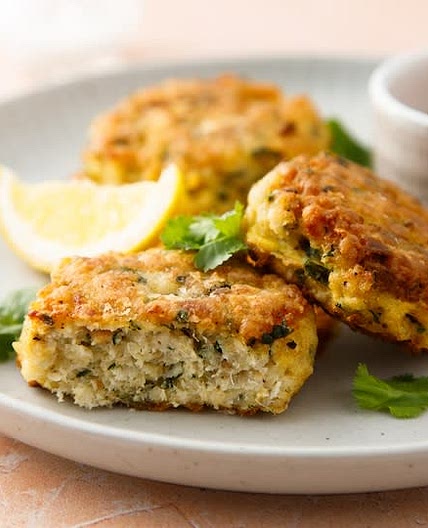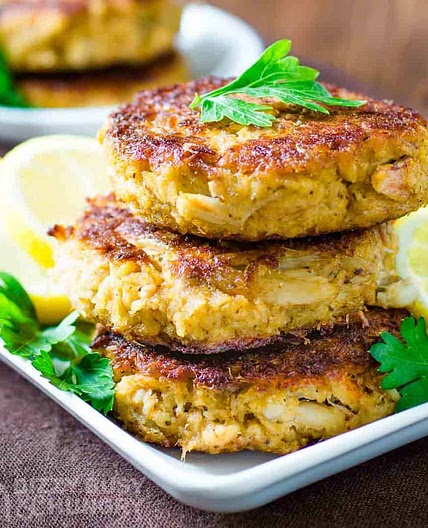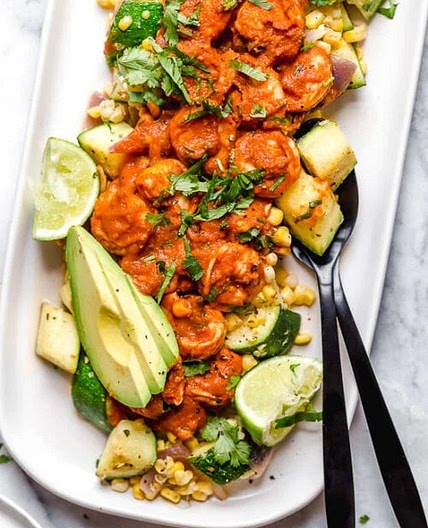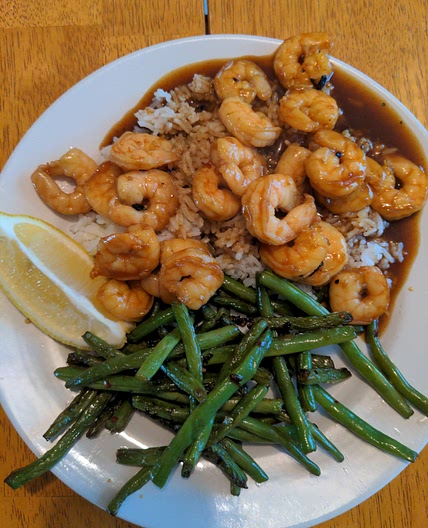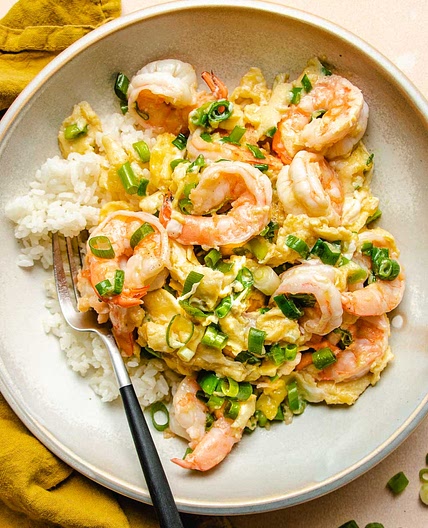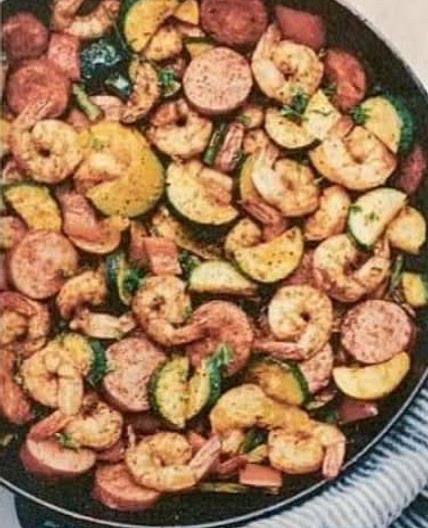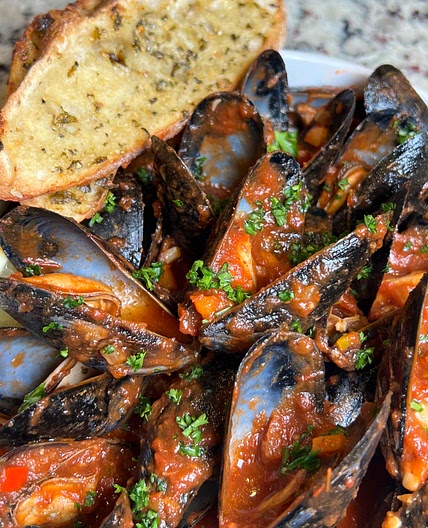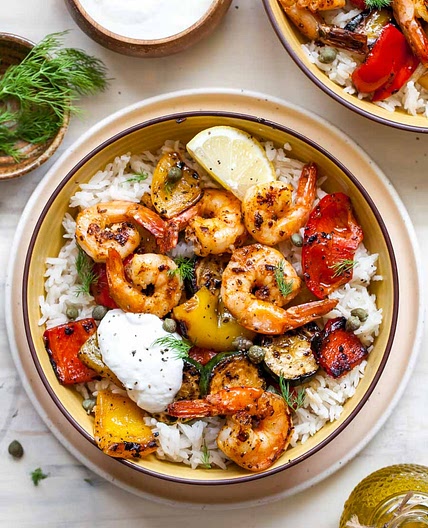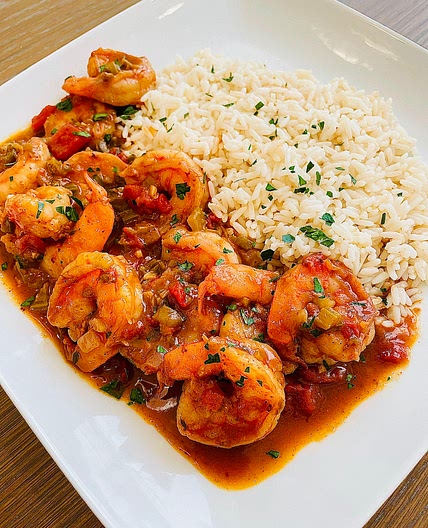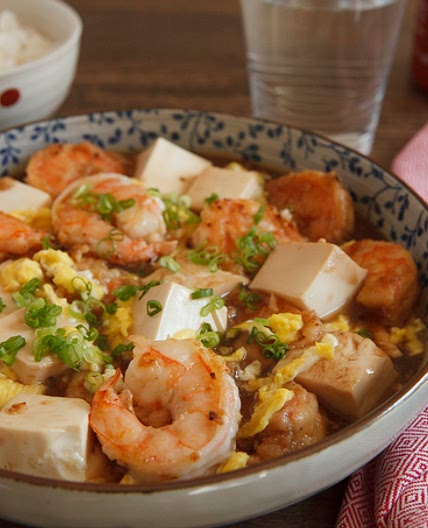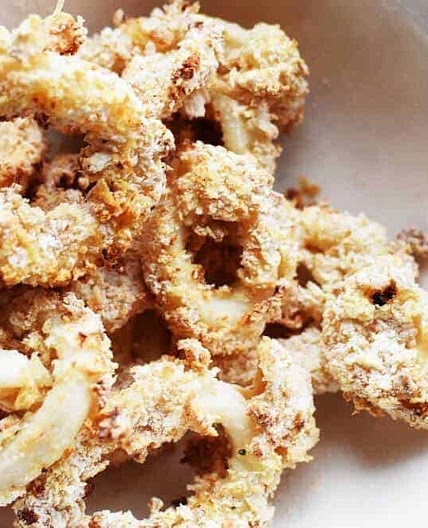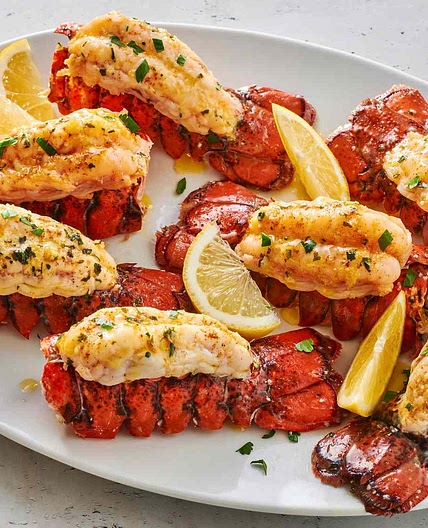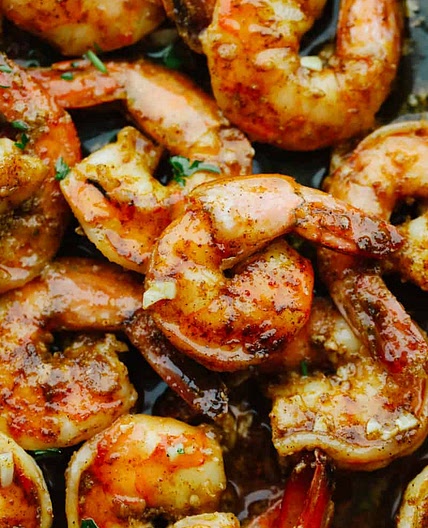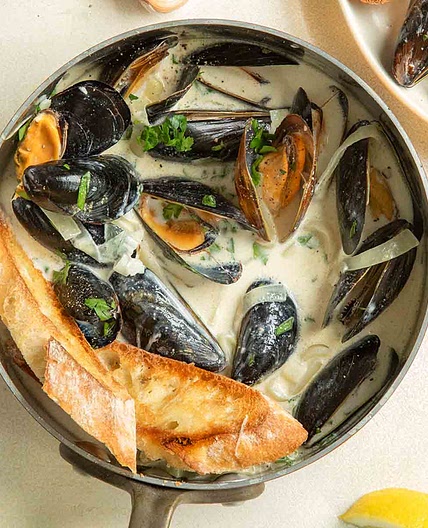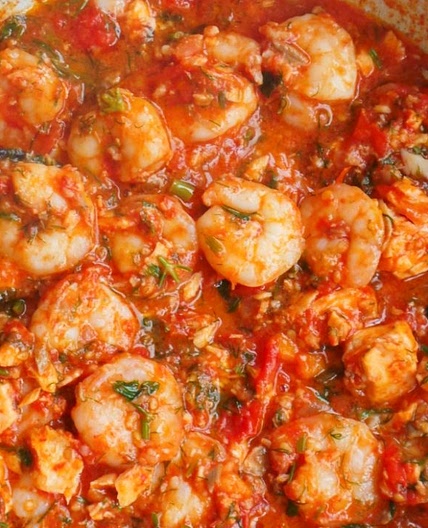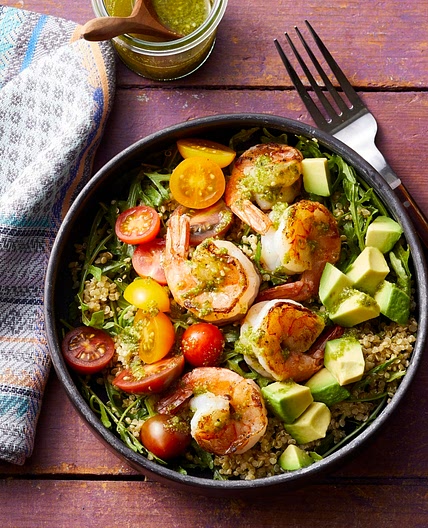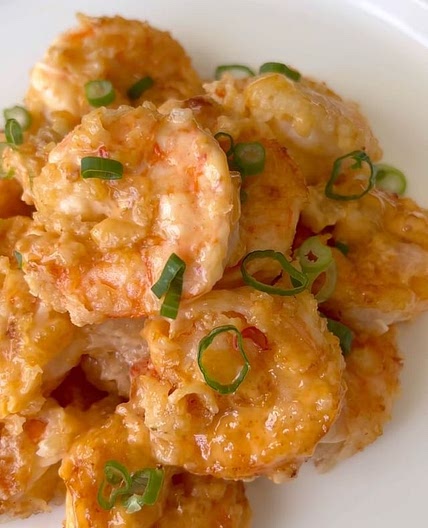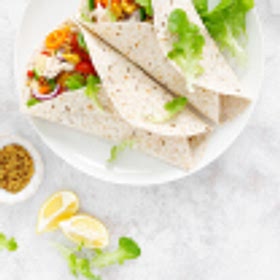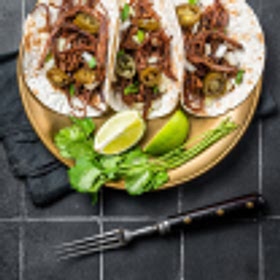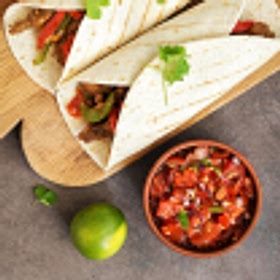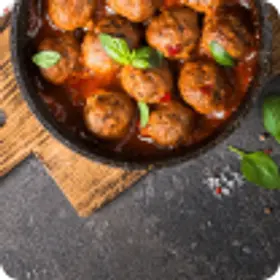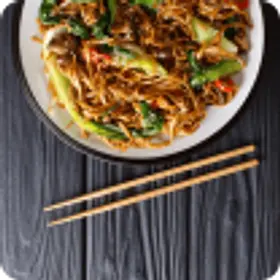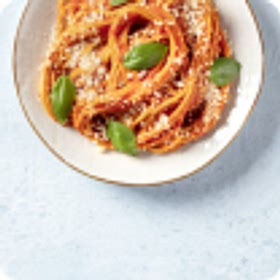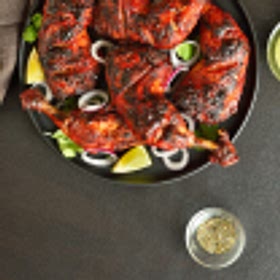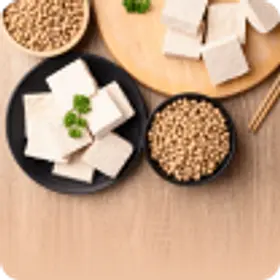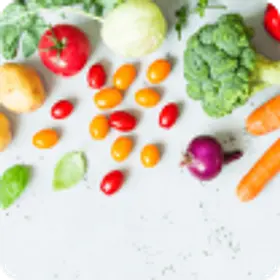Seafood: A Comprehensive Guide to All Things Oceanic
Whether you prefer salmon, tuna, lobster, or shrimp, there is no denying the flavor and possibilities that seafood recipes can offer. Not to mention, most seafood is super healthy and many experts recommend we include more of it in our diet! It's a good source protein and is often considered a delicacy. In the spirit of eating more seafood (it's hard, but somebody's gotta do it!) let's explore everything you need to know, from cooking techniques to seafood recipes featuring everything from shellfish to salmon.
Varieties of Seafood
Seafood is a broad term for a group of foods including fish, shellfish, and crustaceans. Some common examples of seafood include tuna, salmon, lobster, crab, shrimp, and oysters.
Each type of seafood has its own flavor and texture, just like meat. Because there are so many options, it works for quite a few different dishes and cooking styles.
| Seafood Type | Examples |
| Saltwater Fish | Tuna, Salmon, Bream, Barracuda |
| Freshwater Fish | Eel, Tench, Sturgeon |
| Mollusks | Squid, Octopus, Snails, Cuttlefish, Scallops |
| Crustaceans | Crab, Lobster, Shrimp |
| Echinoderms | Sea urchins, Sea cucumbers |
Nutritional Benefits of Seafood
Seafood is a nutrient-rich food group that can offer significant health benefits when consumed as part of a balanced diet. It is a rich source of protein, omega-3 fatty acids, vitamins, and minerals, all of which are essential for maintaining good health.
Some of the most significant health benefits of consuming seafood include improved heart health, better brain function, and reduced inflammation. Let’s explore some of the nutritional treasures found in seafood.

Protein Powerhouse
Seafood is an excellent source of high-quality protein, essential for muscle growth, repair, and overall health. Almost all seafoods are high in protein, as are most meats. However, some cuts are leaner and healthier overall. For the most part though, you can rest assured that a portion of grilled seafood is a healthy choice.
Omega-3 Fatty Acids
Rich in omega-3 fatty acids, seafood promotes heart health, reduces inflammation, and supports brain function, making it a brain-boosting delight. Typically, oily fish gives you the best bang for your buck here. Some examples of fish highest in omega-3 include mackerel, salmon, and sardines.
Vitamins and Minerals
Seafood is a natural source of vitamins such as B-complex vitamins, vitamin D, and vitamin A, as well as minerals like zinc, selenium, and iron, all contributing to good overall health.
If you want more info about importance of the nutrition you can read our blog about Meeting Your Nutritional Needs!

Tips for Cooking Seafood Perfectly
Cooking seafood just right needs a mix of being careful and having a good touch. It’s easy to overdo or underdo seafood, and the difference in a perfect dish or a badly cooked one can be as little as a couple of minutes. And trust us when we say it makes a huge difference to the taste – and to the food safety!
When you pick really fresh stuff, cook it gently, and season it with love, you can make amazing seafood dishes that show off the ocean.
Don’t forget to watch how long you cook things and how hot they get. Seafood is fragile, so you need to be attentive and skilled when you cook. With these ideas, your seafood recipes will make everyone’s taste buds happy and they’ll want more. Follow these tips to help your seafood recipes turn out awesome every time.
Choose Fresh Seafood
The key to excellent seafood dishes starts with the freshest ingredients. When purchasing seafood, look for:
- Fish: Clear, bright eyes, shiny scales, and a fresh oceanic smell.
- Shrimp: Firm and translucent flesh with no black spots or off-putting odors.
- Shellfish: Live shellfish should have tightly closed shells and a mild sea aroma.
Mind the Cooking Time
Seafood cooks quickly, so it’s crucial to avoid overcooking. Overcooked seafood can become tough and lose its natural juiciness. Depending on the type of seafood and the cooking method, most varieties only need a few minutes to cook through. Keep a close eye on the cooking process and be ready to remove the seafood from heat promptly.
Season with Precision
Seafood has delicate flavors which really sing when they’re well respected. But because they aren’t heavy or overpowering, they can be easily overwhelmed.
Instead of heavy sauces or excessive seasonings, use fresh herbs, aromatic spices, and zesty citrus to enhance the natural taste of the seafood. Keep the seasonings simple and let the seafood shine.
Embrace Gentle Cooking Techniques and Mind the Temperature
Seafood is best cooked with gentle methods to preserve its tenderness and moisture. Some suitable cooking techniques for seafood include:
- Grilling: Provides a smoky flavor while maintaining the natural juices.
- Baking: Allows for even cooking and minimal handling.
- Poaching: Keeps the seafood moist and tender in a flavorful liquid.
- Sautéing: Quick and efficient, maintaining the seafood’s natural texture.
To ensure seafood is safe to eat, it has to reach the appropriate internal temperature. Invest in a good quality cooking thermometer to check the doneness of seafood. The safe internal temperature varies depending on the type of seafood and seafood recipes. Here are some guidelines:
- Fish: 145°F (63°C)
- Shrimp, Lobster, and Crab: 145°F (63°C)
- Scallops: 125°F (52°C)
- Clams, Mussels, and Oysters: 145°F (63°C) or until their shells open
- Squid and Octopus: 195°F (90°C) or until fork-tender
Not sure how to convert the temperatures on your baked seafood recipes? Check out our oven gas mark conversion chart, which covers gas marks, Celsius, and Fahrenheit.
Avoid Overcrowding
When cooking seafood, ensure there is enough space in the pan or on the grill to allow even cooking. Overcrowding can lead to uneven cooking and steaming rather than achieving that amazing flavorful sear or pretty grill marks.
High-Quality Cooking Oil or Butter
To prevent sticking and burning, use high-quality cooking oil or butter when preparing seafood. Olive oil, coconut oil, or clarified butter are excellent options for adding richness and enhancing flavors. Remember that the smoke point of oils differs, so you want to keep that in mind depending on your cooking method.

Common Dishes and Seafood Recipes
Seafood is a versatile ingredient that can be used in a wide variety of dishes, from traditional fish and chips to more complex seafood stews and chowders. Some common dishes and occasions featuring seafood include:
Lobster and shrimp cocktail
A timeless classic, the lobster and shrimp cocktail is a delightful appetizer that sets the tone for an elegant dining experience or special occasions. The lobster meat and juicy shrimp are served chilled, making this dish a refreshing treat on a hot summer’s day. Of course, you can make it without the lobster if you’re looking for a more budget-friendly dish.
Crab cakes
Crab cakes are a much-loved seafood delicacy that brings together the sweetness of crab meat with a crispy, golden-brown crust. Whether served as an appetizer or a main course, these cakes never fail to impress – both in terms of looks and taste.
Grilled salmon
Grilled salmon with a delightful citrus glaze is a healthy and flavorful way to enjoy this nutritious fish. The tangy sweetness of the glaze perfectly complements the rich, buttery taste of the salmon, creating a harmonious and memorable dish.
Cioppino
Hailing from the bustling food scene of San Francisco, Cioppino is a rich seafood stew that blends together ocean flavors and various yummy things. Filled with lots of seafood, tomatoes, and tasty herbs, it’s like a big party of coastal cooking.
Feast of the Seven Fishes
Then there’s the Feast of the Seven Fishes. It’s a super fun Italian-American Christmas Eve thing where they go all out with seven different seafood dishes. Each dish means good luck and success, making this feast a happy and yummy bash.

Perfect Side Dishes for Seafood Recipes
To complement the flavors of seafood and create a well-rounded meal, pairing it with the right side dishes is essential. Here are some side dishes that pair well with seafood main courses:
| Lemon Herb Rice Pilaf | A light and flavorful rice pilaf infused with fresh herbs and zesty lemon is an ideal side dish for any seafood feast. The citrusy notes perfectly balance the richness of seafood dishes. |
| Roasted Garlic and Parmesan Asparagus | Tender asparagus spears roasted to perfection with garlic and Parmesan complements a variety of seafood recipes. The nutty and savory profile of the asparagus adds a satisfying contrast to the seafood’s sweetness. |
| Quinoa and Avocado Salad | A refreshing quinoa and avocado salad brings a burst of color, texture, and nutrients to the table. The creaminess of avocado and the nutty quinoa work well with seafood’s lightness. |
| Garlic Butter Brussels Sprouts | Garlic butter Brussels sprouts offers an unusual mixture of nutty, buttery flavors with a hint of garlic, making them an excellent side dish for seafood recipe entrees. The slight crunch of the Brussels sprouts adds texture to the meal too. |
FAQs
Yes, seafood is safe to eat when prepared and cooked properly. It is important to ensure that seafood is fresh and cooked to the appropriate temperature to prevent foodborne illness.
Fresh seafood should have a mild oceanic aroma and should be firm and shiny. It is also important to check for any signs of discoloration or odor.
The best way to cook seafood depends on the type of seafood and your personal preference. Some popular cooking methods include grilling, baking, poaching, and sautéing.
Conclusion
Whether you’re a seafood aficionado or a newcomer to the world of crabs, prawns, and fish, there is always something new to discover and enjoy. The main thing to remember is to be careful about cooking time, and to respect the delicate flavor and texture of seafood recipes!
